Where is Papua New Guinea?
About Papua New Guinea
The Land
The People
Life and Death
Health, Energy and the Environment
Education and Work
Travel, Communication and the Media






Back to the Flags of Oceania page

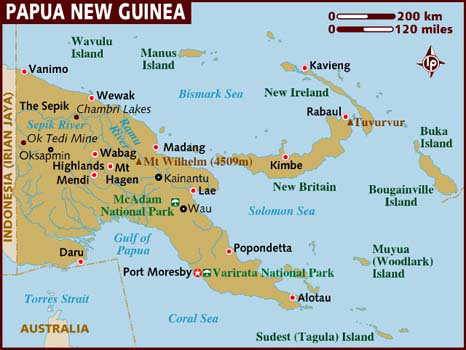


Papua New Guinea is a group of islands, including the eastern half of the island of New Guinea. that form one large country in Oceania. Together with 3 other countries
Papua New Guinea forms a group of islands known as Melanesia.
Papua New Guinea is in the Pacific Ocean.
The land is a mixture of mountains and plains and coastal lowlands.
The geographical coordinates for the centre of Papua New Guinea, also known as lines of latitude and longtitude, are:-
Latitude - 6 00S
Longitude - 147 00E
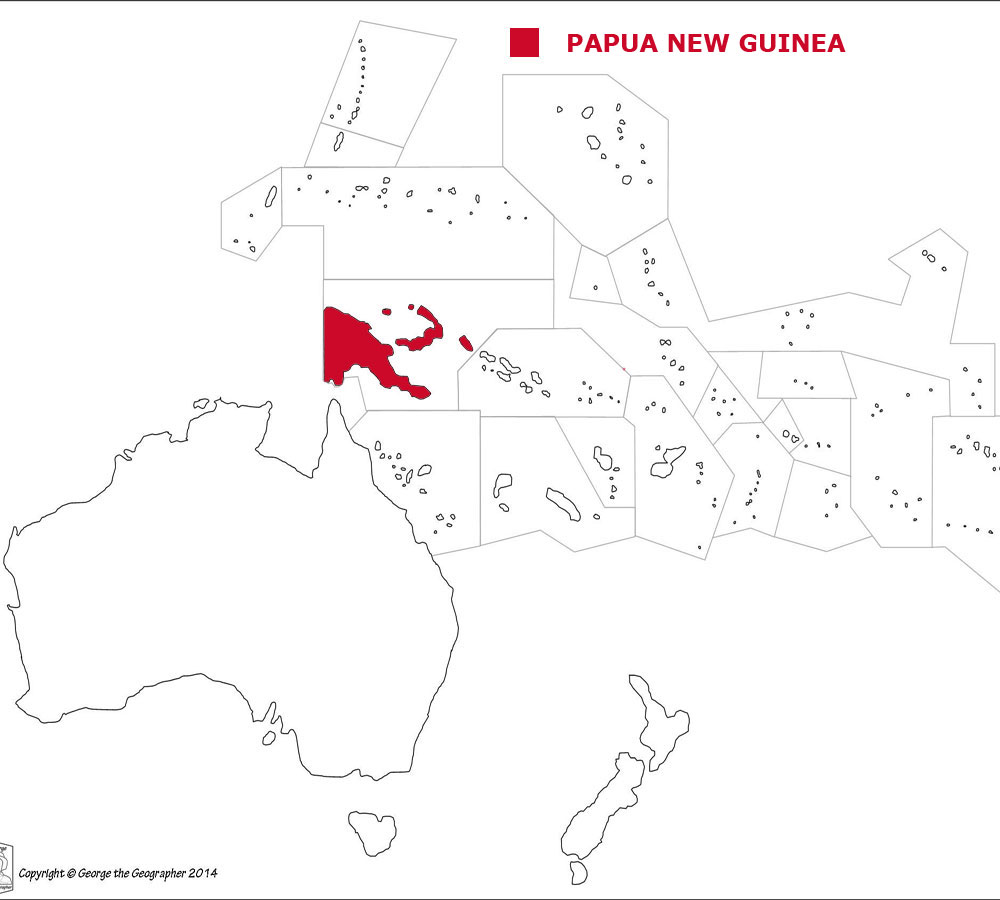

Check the weather in Port Moresby now.
This is the time in Port Moresby now
 The Papua New Guinean flag is
divided in half diagonally from the top flag pole side to the bottom far side. The upper triangle is red and the lower one black. The upper triangle has
a yellow soaring bird of paradise in the centre while the bottom triangle has 5 white stars, representing the Southern Cross constellation.
The Papua New Guinean flag is
divided in half diagonally from the top flag pole side to the bottom far side. The upper triangle is red and the lower one black. The upper triangle has
a yellow soaring bird of paradise in the centre while the bottom triangle has 5 white stars, representing the Southern Cross constellation.
Papua New Guinea is a parliamentary democracy with a Prime Minister as head of government. The British monarch is Head of State represented by a governor general.
In elections everyone over the age of 18 can vote.
The currency in Papua New Guinea is the kina. Papua New Guinea is a member of the Commonwealth.
English, Tok Pisin and Hiri Motu are the official languages.
Hear the National Anthem
These are the anthem words
We have already written our own history of England but are asking schools in Papua New Guinea to provide us with a detailed history of
their own country. Check how here.
![]()
![]() Back to the top
Back to the top

The total land area of Papua New Guinea is 452,860 sq kms which is the 2nd largest in Oceania.
Papua New Guinea has lakes, rivers and canals which total 9,980 sq kms.
Papua New Guinea has a boundary with 1 other country
- Indonesia 824 kms
Papua New Guinea has a coastline of 5,152 kms which is the 5th longest in Oceania.
The highest point in Papua New Guinea is Mount Wilhelm at 4,509 metres.
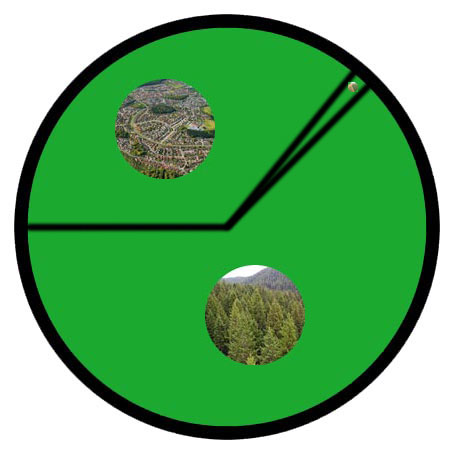

The total population of Papua New Guinea is 6.79 million people, making it the 2nd largest country in Oceania by population.
Of this number 3.32 million are females and 3.47 million are males.
A person from Papua New Guinea is called a Papua New Guinean.
To be a citizen of Papua New Guinea, one of your parents must be a citizen of Papua New Guinea. It is not sufficient to be born in Papua New Guinea. You have to live in Papua New Guinea for
8 years before you can begin to apply for citizenship.
The largest five cities in Papua New Guinea, by population are:-
- Port Moresby 283,733 people
- Lae 76,255
- Arawa 40,266
- Mt Hagen 33,623
- Popondetta 28,198
 Each little Owlbut is 1 person and
the big yellow rectangle is 1 sq km. After a while you can compare countries and see which ones are the most crowded. Remember it is only an average as
more people live closer together in towns and cities than in villages out in the country.
Each little Owlbut is 1 person and
the big yellow rectangle is 1 sq km. After a while you can compare countries and see which ones are the most crowded. Remember it is only an average as
more people live closer together in towns and cities than in villages out in the country.
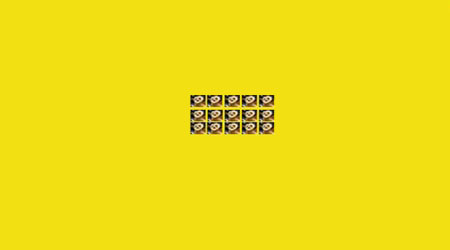
13.0% of the people live in cities or towns.

The birth rate in Papua New Guinea is 24.0 births per 1,000 of population
The death rate in Papua New Guinea is 6.5 deaths per 1,000 people.
Check this against the birth rate. If the death rate is higher than the birth rate then
the population will decrease unless immigrants arrive in the country.
There are 33.8 deaths of girls under 1 year per 1,000 of births and 40.9 deaths of boys.
The median age for females is 22.8 and for males is 23.0. The median age is that age which divides the population exactly in half so there are the same number
of people above the median age as below it.
We have no figures for the average age of a woman when she has her first child.
The elderly dependency ratio is 6.1. This is the number of elderly people (ages 65+) per 100 people of working age (ages 15-64).
The potential support ratio is 16.4. This is the number of working-age people (ages 15-64) per one elderly person (ages 65+). As a population ages, the potential support ratio tends to fall, meaning there are fewer potential workers to support the elderly.
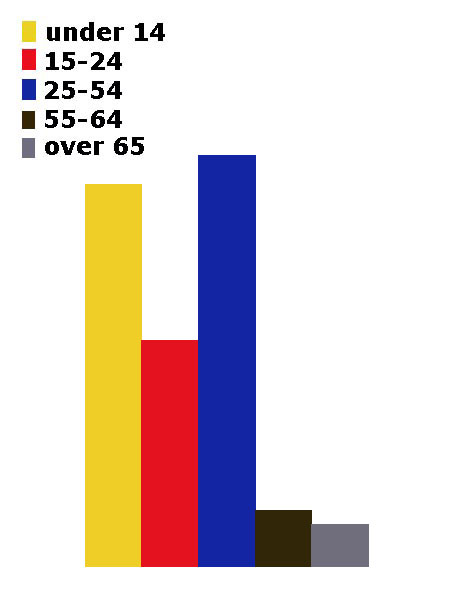
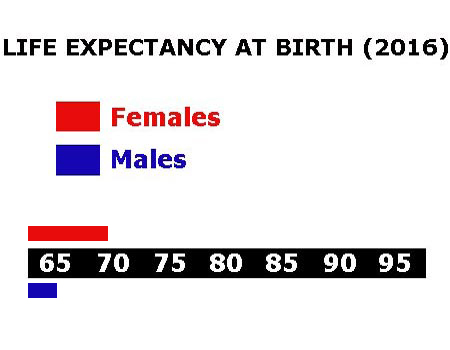

Papua New Guinea spends 4.3% of its total income on health care.
There are 0.06 doctors per 1,000 people.
We have no figures for the number of hospital beds per 1,000 people.
21.3% of the population are estimated as obese.
88.0% of the urban population and 32.8% of the rural population have drinking water that is either piped into their home or they have access to a public tap, a protected borehole, well, spring or
protected rainwater collection facility.
56.4% of the urban population and 13.3% of the rural population have access to a flushing toilet that is connected to a sewer. a pit latrine (that is a
permanent hole in the ground that is looked after) or a composting toilet.
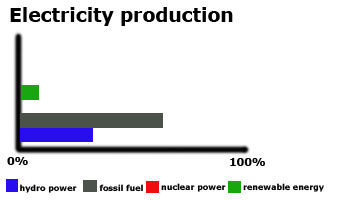
Papua New Guinea releases 3.7 million metric tons of carbon dioxide by burning fossil fuels in the process of producing and consuming energy. This puts it as the 3rd highest in Oceania.

We have no figures for the amount Papua New Guinea spends on education.
Children usually start school at age 7 in Papua New Guinea. Primary education is for eight years until age 15 and secondary education can go on till
17 or 19, depending on ability. No form of eductaion in Papua New Guinea is compulsory. School educ ation can be followed
by further education at a university or college.
Generally the school year consists of 4 terms and starts in the third week of January and finishes in the second week in December. There is usually a 1 week
break in April, a 2 week break at the end of June and a 1 week break in the middle of Septmber.
62.8% of females and 65.6% of males are able to read and write by the age of 15.
3.6% of all people aged between 16 and 24 are not in work. Among females 3.0% are unemployed while with males 4.3% can't find work.
The total number of people available for work in Papua New Guinea is 4.37 million.
 They work in the following sectors.
They work in the following sectors.
- Agriculture includes farming, fishing and forestry work
- Industry includes mining, manufacturing, construction and energy workers
- Services is everything else

There are 21 paved airports in Papua New Guinea, which is the 3rd highest number in Oceania.
![]()
There are no railways in Papua New Guinea.
![]()
There are 9,349 kilometres of roads in Papua New Guinea, which means Papua New Guinea is in 3rd place for the most kilometres of roads in Oceania.
![]()
There are 2 major national newspapers in Papua New Guinea.
There are 3.56 million mobile phone users.
2% of the people have a fixed landline.

527,000 people have access to the internet at home via any device (computer or mobile).


